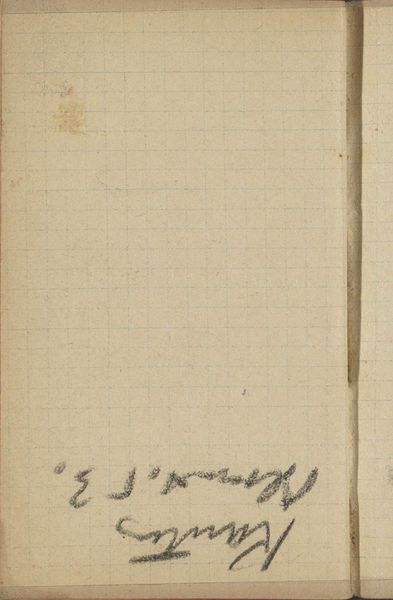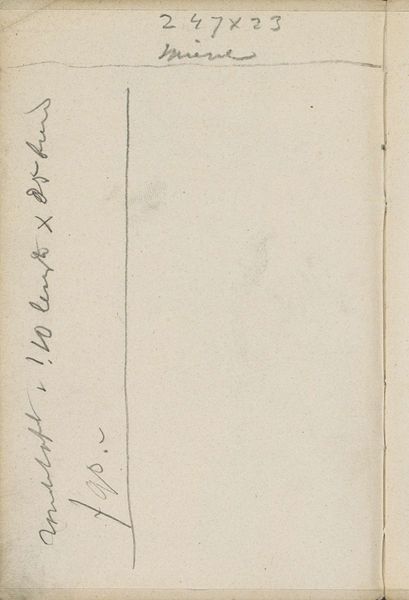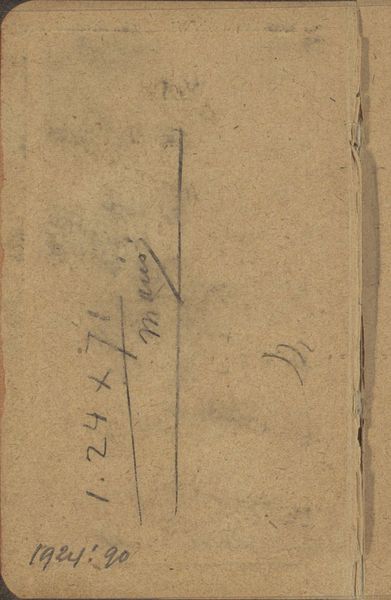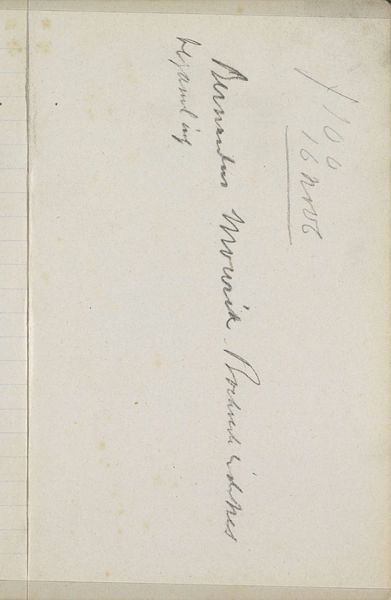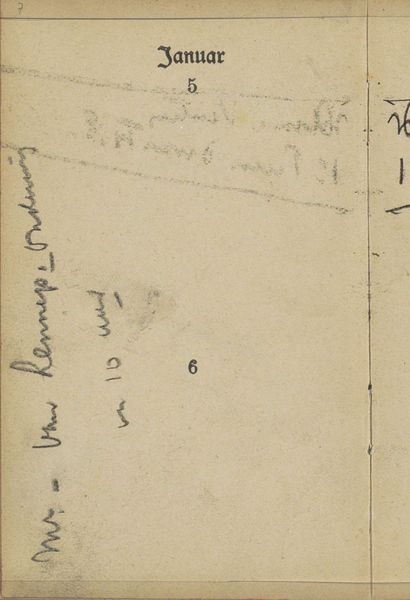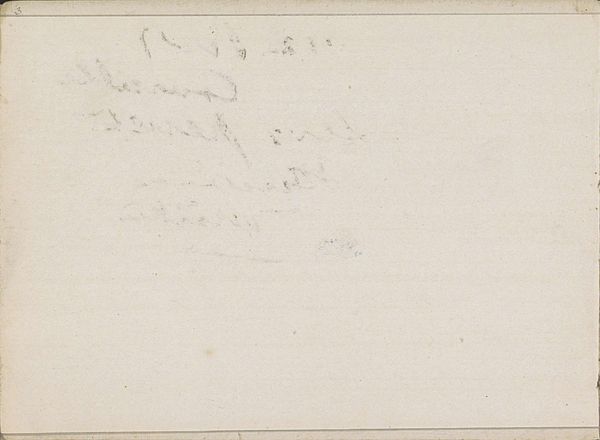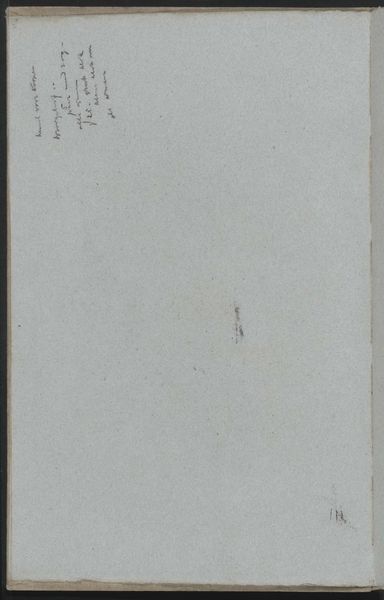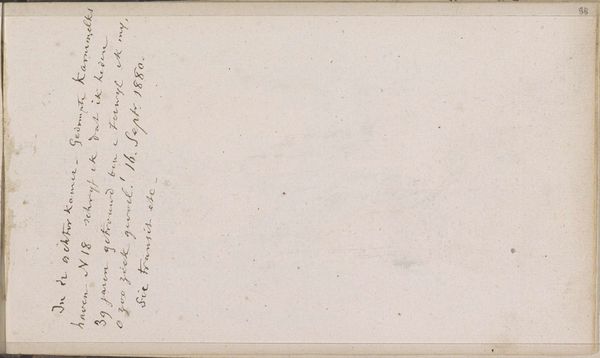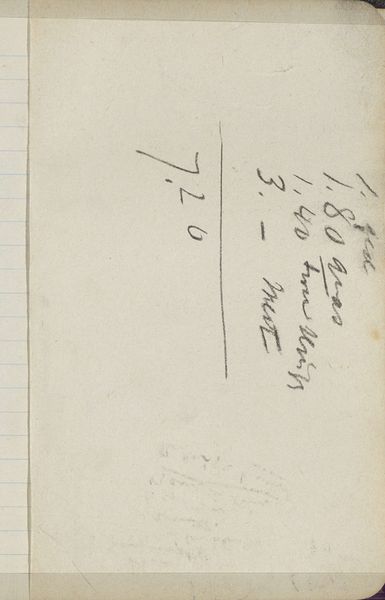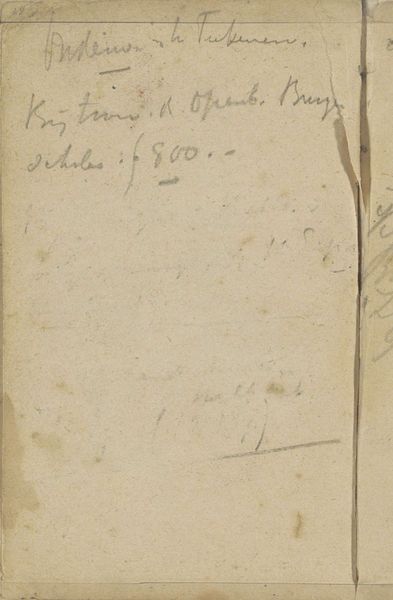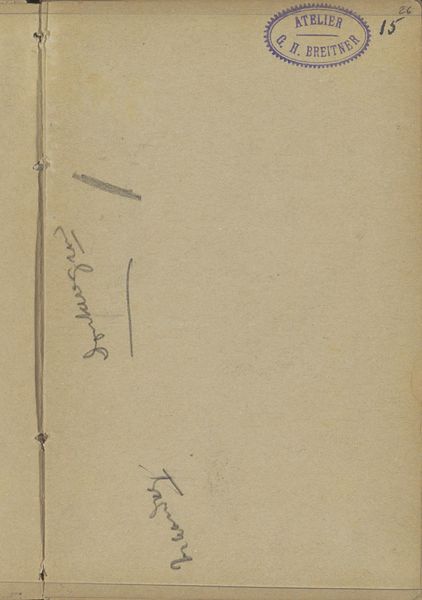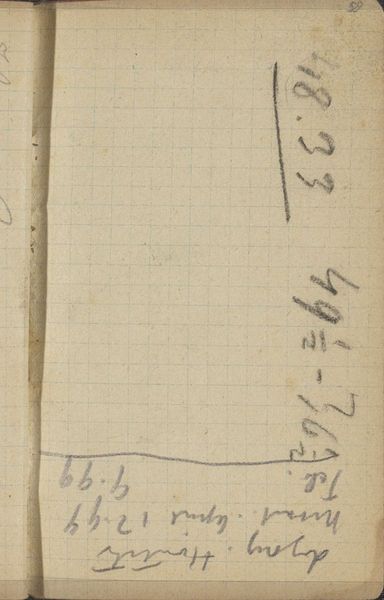
Copyright: Rijks Museum: Open Domain
Curator: Welcome. Today we're looking at "Annotatie," a drawing by George Hendrik Breitner, created around 1896. It’s currently housed here at the Rijksmuseum. Editor: My first impression? There's a fragile intimacy here. It feels like peeking into a secret, doesn't it? Curator: It does, indeed. You're getting a glimpse into what seems like Breitner's personal sketchbook. We see mixed media—pencil, watercolor—on what looks like aged and toned paper, perhaps even a textile component reinforcing the spine. The aged materials definitely give a peek into the history of the object. Editor: Yes, it's the texture of the materials that speaks volumes. Think about the hands that handled this paper, the graphite wearing down, leaving its mark on the surface... And the grid lines faintly showing, a system beneath the apparent freedom of handwriting! Was the paper readily available and inexpensive at the time? It reminds me of the labor required for the manufacturing and distribution of artist’s supplies. Curator: Excellent point! The availability and cost of materials always influence artistic practice, although this isn’t really about that. Here the "hand-drawn type," those faded inscriptions, are definitely intentional—a very specific stylistic choice by Breitner. Perhaps we're looking at annotations regarding street photography, something he famously pursued. It would have served as a useful space to make his calculations. Editor: Possibly. The fading and the diminutive scale are intriguing. They evoke a sense of ephemerality, like whispered thoughts on paper struggling to stay in existence. What meaning may emerge if one were able to decipher this text? Curator: It certainly is suggestive and elusive. I can see that it says “Nr. Cart A. Redermount.” It also reads as being quite “modern.” Given Breitner's well-documented fascination with documenting Amsterdam life through both painting and photography, perhaps he intended it more as functional documentation. Editor: Precisely. Functionality itself carries weight. The value here emerges not from traditional techniques but, rather, in a form that makes visible an exploration into materials. Curator: A beautiful reminder that art often lies not in the grand gesture, but in the subtle echoes of everyday creation. Editor: Yes, and an embrace of art’s capacity to elevate materials from the everyday to something far more resonant.
Comments
No comments
Be the first to comment and join the conversation on the ultimate creative platform.
